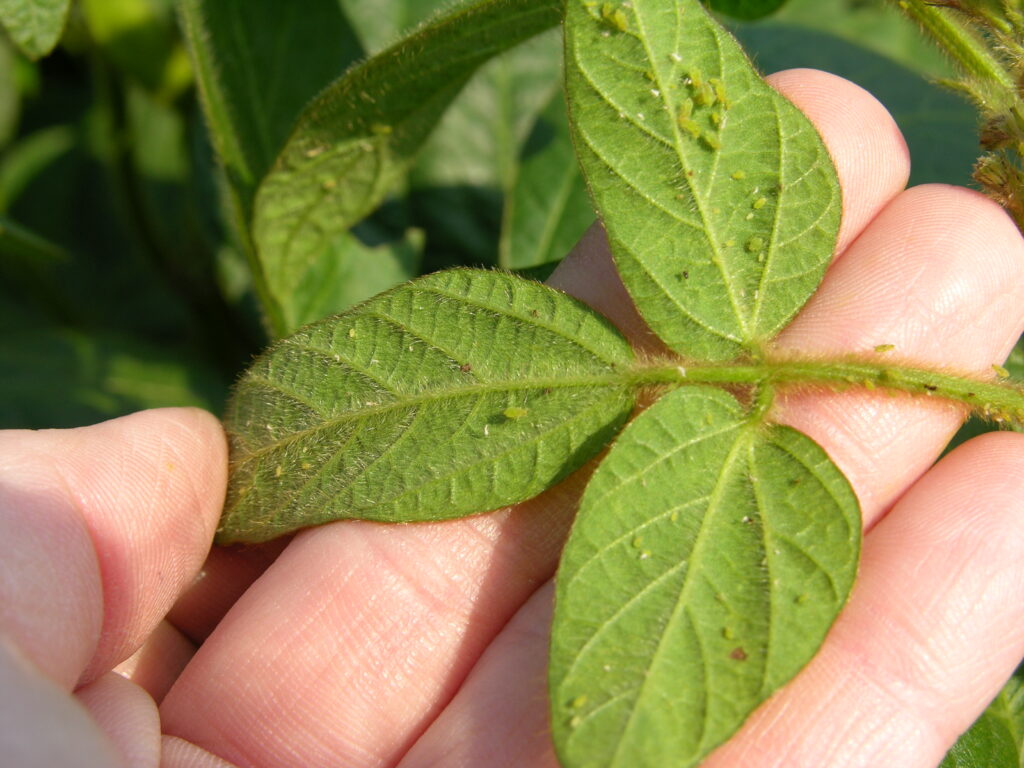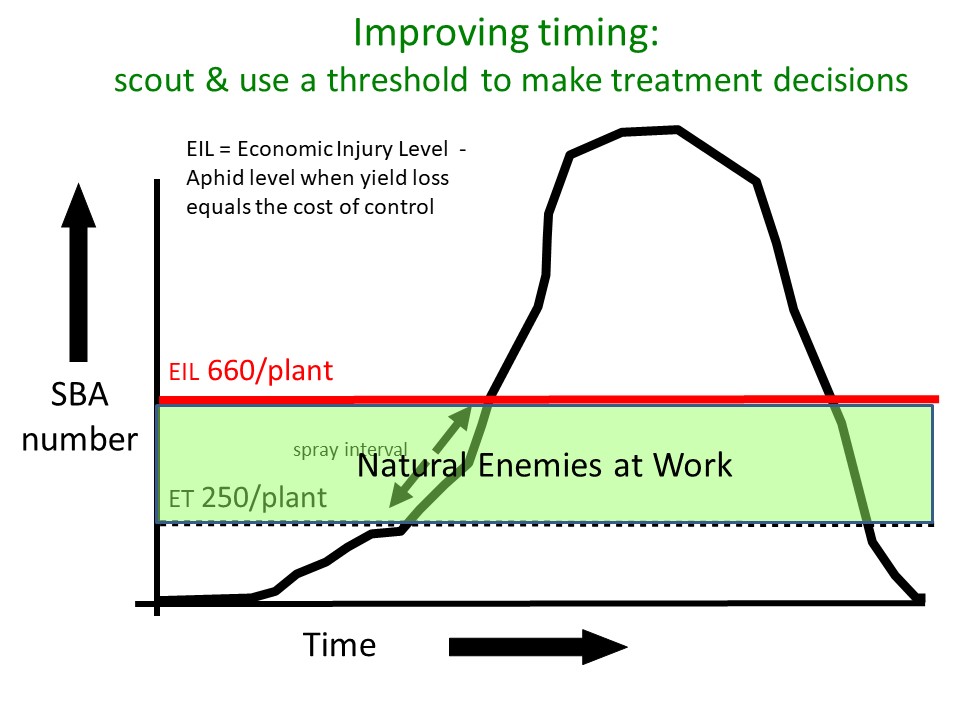
With some soybean fields in early flowering, it is time to scout fields for soybean aphids. Early planted fields tend to be the first to be colonized. The mom aphids start depositing nymphs in pockets in the field that start to build populations of up to 1000s per plant. Once these pockets of aphids get too crowded, the next winged generation will leave and deposit their young nymphs more evenly across these fields or relocate them to later planted fields nearby. This redistribution across the field often gives natural enemies a chance to get to them before populations can more evenly build up again across the field. Any premature applications of insecticide will kill these natural enemies and give the aphids the upper hand. Any aphids left alive – and there always are some – will quickly rebuild the population in the absence of their predators.

During R1 to R5 stage of soybeans, an insecticide application is only required once 80% of the plants in the field have at least 250 aphids per plant and it is apparent that the population is on the increase. This means scouting the field more than once. This threshold gives an approximate 7–10-day lead time before the aphids would reach the economic injury level (~600 aphids per plant), where the cost of control is equal to yield loss.
Experience has shown that natural enemies can keep the aphid population fluctuating around the 250 aphids per plant threshold for some time. This fluctuation means the predators and parasitoids are working hard for you, trying to take down the aphid population. They are also the reason that soybean aphids have not really been a major problem in the last decade. Only when you see that the aphid populations continue to rise instead of fluctuating or decline, do you know that the natural enemies are not able to keep up. Once soybeans reach the R6 stage, more aphids per plant are needed to see any yield response.
What if it is a dry year? Shouldn’t we sprayer sooner? The answer is yes, but not until the field has reached the 250 aphids per plant threshold. Again, there is some buffer between the threshold and the economic injury level. In stressed years when the canopy is shorter and plants are struggling from lack of moisture, then you spray shortly after threshold is reached and is not fluctuating. In stressed years, aphid populations thrive on potassium deficient plants (it improves nitrogen uptake for the aphids) so it is also important to scout fields with low potassium soils.
To help make these spray decisions easier, use the Aphid Advisor App developed from research here in Ontario is available free on Google Play or the Apple Store. The Aphid Advisor takes into consideration how many aphids will build up in the next week, based on the weather forecast, calculate how many aphids will be controlled by the number of type of natural enemies that you are finding and decide for you if a spray is needed. All the key natural enemies are also shown in the app to help you recognize them while scouting. It helps take away any guess work in whether there are enough natural enemies to help or not and helps reduce the chance of unnecessary spray applications.
Registered foliar insecticides are listed in the Ontario Crop Protection Hub. With soybeans in flower, pollinators may be present in the field. Time insecticide applications to minimize bee exposure. Spraying in the evening after 8 pm when temperatures are below 13°C helps minimize honey bee exposure, unless there is evidence of a strong temperature inversion. The second best option is to spray early in the morning before 7 am. If you plan to spray, contact beekeepers who have hives within 5 km of the field so that they may take further measures to reduce risk of exposure.
One thought on “Time to Scout for Soybean Aphids”
Comments are closed.